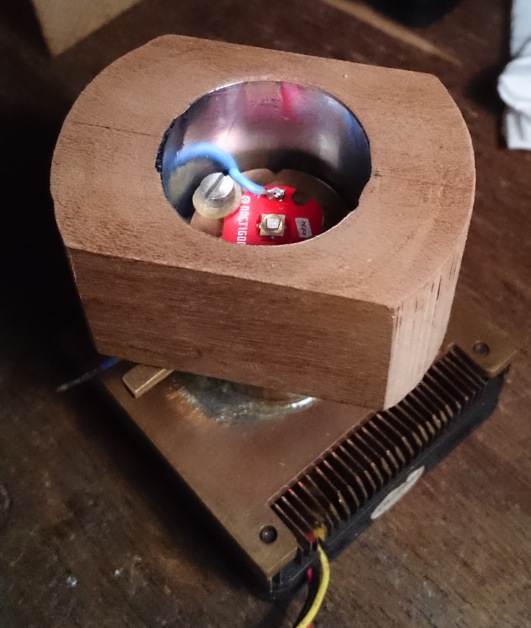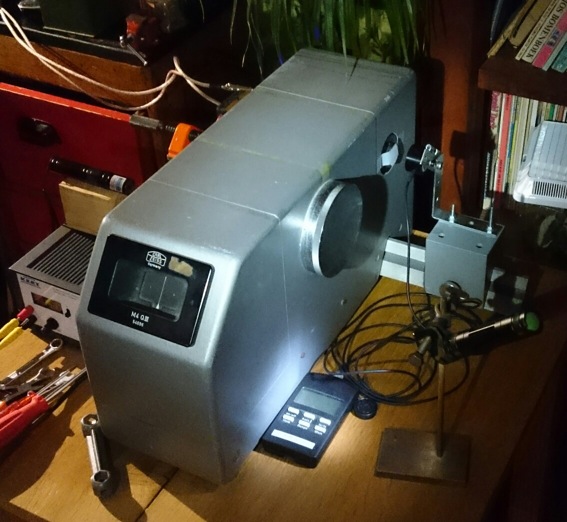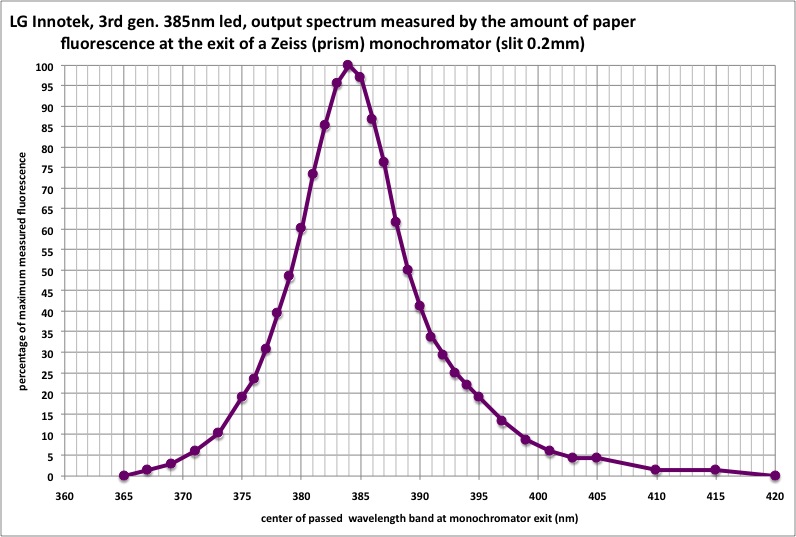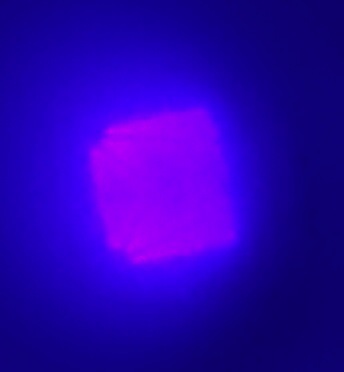
I bought 10 of these 385nm leds mounted on 20mm aluminium stars from Aliexpress, 2 dollars a piece (no idea how long the listing will last, but it is still listed at the moment of this write-up). I never had a 385nm led before, I was curious if it had the same visible light 'pollution' as most 365nm leds. It is a XP-footprint 385nm led, and there's hardly anything to be found on it, it is not on LG Innotek's website (anymore?). Some googling just retrieved a concept datasheet, the website that contained the datasheet referred to this led as '3rd generation LG UV-led'.

So I should get 780 mW out of it, decent enough! First notion was is that these leds were horribly reflowed, solder all over the place and I suspect the temperature was way too high, it seems that in many of the 10 leds, the die had been detached during reflow, there's solder blobs around the die!

There's no way for me to measure absolute output power of UV-leds (I have no optical power meter, like some of the laser-guys). Instead I measure the power indirectly by illuminating a piece of photocopier paper and measure the blue fluorescence with a luxmeter. I used a set-up for this before, but for this test I designed a simpler set-up that sits on top of my integrating sphere, a piece of paper covers the entrance hole of the sphere and on top of that a holder that fits the standard copper ledmount that I use for emitter tests. The inside of the holder is covered with aluminium tape to get an as wide as possible cone from the led illuminating the paper:




For 365nm leds I will add a ZWB2 filter to this set-up.
Measurements like these are relative, for absolute output numbers in mW, it needs to get a calibration that I do not have. And then a separate calibration for every wavelength because: does 'x' mW of 365nm light cause the same amount of paper fluorescence as 'x' mW of 385nm or 400nm light? And does het paper die bleach upon illumination? (I did not notice obvious bleaching sofar). And is the fluorescence lineair with illumination or does the paper whitener's excitation shows saturation at higher illumination levels? Again it does not seem so but I did no rigorous testing on these things.
So here's the output and voltage of this LG led (on a 16mm XP-Noctigon) as a function of current, as explained above the output is not absolute, it is represented by the reading of the paper fluorescence by the integrating sphere's luxmeter, so is given in lux.

*I'd say with the led on a DTP copper board, the current sweetspot is about 1.5A, but on a single li-ion battery you wil not get there, the voltage is so high that even direct drive you hardly get over 1A, which will still give a very good output :-)
*the absolute output compared to other UV-leds can not be derived from this graph yet, because I have not measured other UV-leds with this exact set-up. And this is the first 385nm led sofar. If the spec-sheet is correct, and the output at 500mA is indeed ~700mW, at 1.5A we're at 1700mW radiant power :-)
I have build a 16340 tube-style flashlight with this led, direct drive, no modes and was struck by the good output, but also by the similarity of this light compared to the light of a 400nm flashlight, same purple glow, bank notes show similar fluorescence, and absence of the typical broadband white background of 365nm leds. So much that I doubted the led being 385nm at all.

So to complete the test I was forced to check the output spectrum. The antique Zeiss monochromator was dusted off, and a spectrum was measured. I calibrated the monochromator with a 405nm laser (it is still 5nm off), mounted the led in front of the entrance hole, taped a piece of copier paper over the exit hole and measured the fluorescence with my most sensitive luxmeter (consistent reading down to 0.01lux). The slit (determining the exit wavelength band width) was set at 0.2mm, like in my other measured spectra.



This is what I measured with the maximum reading set at 100, mind that again because of the use of paper fluorescence, and because of unknown wavelength dependance of the transmittance of the monochromator, this is not an exact output spectrum, even though I suspect it is close enough to one, and the peak will be fairly exact.

So my suspicion was not confirmed, this led indeed peaks at 385nm, and at 400nm the output is down to less than 10% of max.
Conclusion. Despite the maltreatment of the manufacturer reflowing them way too hot, this led performs very well, although the Vf is a bit high for maximum performance with single li-ion use. It was nice to see what a 385nm led is like, but it does not have the unique performance of 365nm leds.
Thanks for reading!



